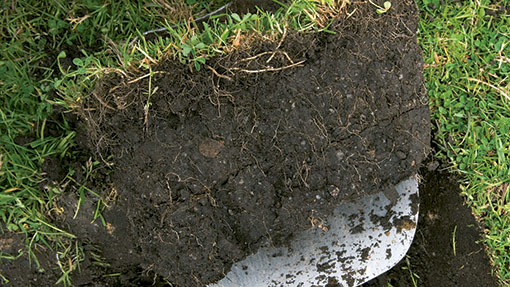6-step guide to assessing soil compaction

Unprecedented, prolonged wet weather means that soil compaction from machinery and stock is a big risk on farms.
The financial implications of poor soil structure can be very costly and therefore assessing and dealing with compaction before it is too late is imperative.
See also: Our guide to choosing the right machinery to sort out grassland compaction
The cost of a unit of feed goes up dramatically if you fail to get a good crop of silage but you won’t know you’ve got bad soil structure unless you have done an assessment.
Steps to assess grassland for soil compaction:
- Dig a hole with a spade to ploughing depth (typically around 18cm). Examine this topsoil for signs of worm activity (aim for about 15 a spadeful). Lots of earthworms are a good sign as they burrow through the soil and create natural channels for water and oxygen and roots to flow through. They also break down and incorporate organic matter into the soil. Spreading manure will encourage worm populations due to its high organic matter content.
- Assess root structure. Ideally roots should penetrate all the way down through the soil quite deeply (in the top 15-18cm) to enable the plants to access nutrients low down.
- Assess soil structure. A well-structed soil will be quite crumbly in texture and will crack easily under gentle pressure. Any cracks in the soil should be vertical. Poorly structured soil won’t break up easily or may break up into larger clumps. Horizontal cracks are a sign of hoof or tractor compaction.
- Smell the soil. Good soils will smell earthy, while badly compacted topsoil will smell rank, like rotten eggs.
- Soil should be a healthy red/brown colour with no grey or orange patches. Mottled grey colouring is indicative of repeated waterlogging.
- Dig deeper into the subsoil. Repeat steps 1-5, remembering that, while subsoil will naturally be more compact, worm numbers, root, smell and colour targets will be valuable.
